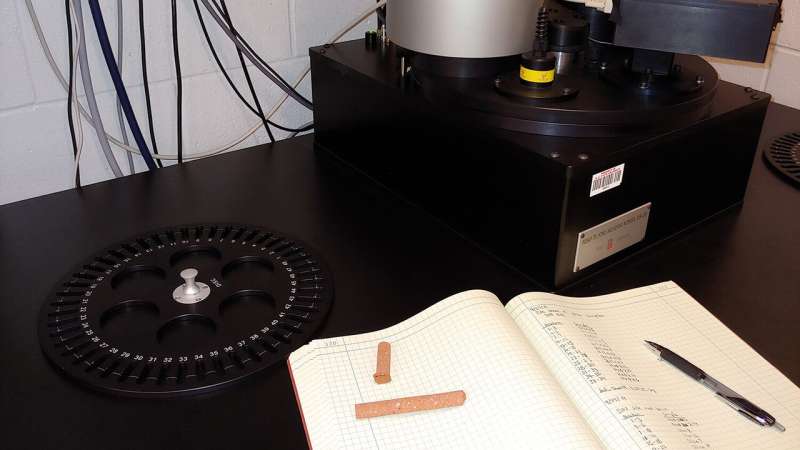Using building materials to monitor for high enriched uranium

A new paper details how small samples of ubiquitous building materials, such as tile or brick, can be used to test whether a facility has ever stored high enriched uranium (HEU), which can be used to create nuclear weapons. The technique could serve as a valuable forensic tool for national or international efforts related to nuclear nonproliferation and security.
"We can now use the housing structure itself as part of any nonproliferation monitoring efforts," says Robert Hayes, an associate professor of nuclear engineering at North Carolina State University and author of the paper. "This work details the theory to test building material samples to differentiate between the forms of uranium used in nuclear power and the HEU that's used to develop nuclear weapons."
The technique builds on previous work done by Hayes and his research team.
The method requires testing a relatively small core sample of the relevant building material, about the size of your pinkie finger. The testing is done using hardware somewhat similar to that used to assess radiation exposure of dosimeter badges worn by workers in the nuclear power industry. In a sense, a small piece of any wall effectively becomes a dosimeter badge.
"Our technique allows us to determine how much radiation a material has been exposed to, in addition to the very types of radiation a material has been exposed to," Hayes says. "Because different radionuclides have different radiation fields, these measurements allow us to determine which nuclear materials were stored near whatever building material we're sampling."
While this technique is new, there is already interest in it among the agencies responsible for nuclear monitoring—and Hayes is working to improve the technique further.
"We're optimistic that this will be a valuable tool in the nonproliferation monitoring toolbox, but we need to address some existing questions," Hayes says.
"For example, the radiation signature will vary depending on where the nuclear material was stored in relation to whatever sample we're testing. If our sample was from brick that was right under a uranium storage container, the signature will be different than if the container was located 20 feet away, horizontally. Theoretically, these properties of the signature would be consistent over any gridded array of the same building material. Sampling such an array would then allow us to reconstruct not only what material was stored at a site, but precisely where it was stored. That's something we're working on now."
The paper, "Potential Retrospective Uranium Enrichment Determination Using Solid State Dosimetry Techniques on Ubiquitous Building Materials," is published in the Journal of Nuclear Materials Management.
More information: Robert Bruce Hayes. "Potential Retrospective Uranium Enrichment Determination Using Solid State Dosimetry Techniques on Ubiquitous Building Materials" July 2019, Journal of Nuclear Materials Management
















